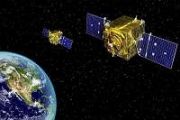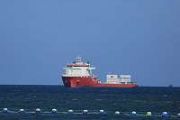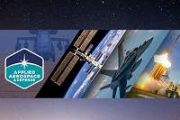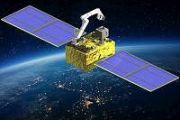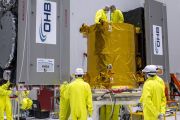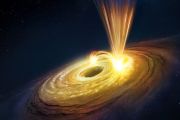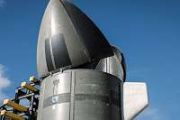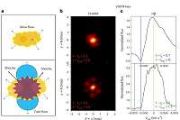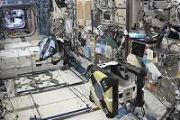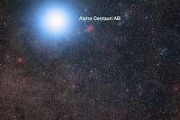
Copernical Team
Astronomers find freaky stars covered in helium burning ashes
 A German team of astronomers from the Universities of Tubingen and Potsdam, led by Prof. Klaus Werner, have discovered a new type of weird stars.
The spectra of the star sample, obtained by Large Binocular Telescope in Arizona, USA, and the Large Sky Area Multi-Object Fiber Spectroscopic Telescope (LAMOST) based at Xinglong and operated by the National Astronomical Observatories of the Chi
A German team of astronomers from the Universities of Tubingen and Potsdam, led by Prof. Klaus Werner, have discovered a new type of weird stars.
The spectra of the star sample, obtained by Large Binocular Telescope in Arizona, USA, and the Large Sky Area Multi-Object Fiber Spectroscopic Telescope (LAMOST) based at Xinglong and operated by the National Astronomical Observatories of the Chi ESO telescope captures surprising changes in Neptune's temperatures
 An international team of astronomers have used ground-based telescopes, including the European Southern Observatory's Very Large Telescope (ESO's VLT), to track Neptune's atmospheric temperatures over a 17-year period. They found a surprising drop in Neptune's global temperatures followed by a dramatic warming at its south pole.
"This change was unexpected," says Michael Roman, a postdocto
An international team of astronomers have used ground-based telescopes, including the European Southern Observatory's Very Large Telescope (ESO's VLT), to track Neptune's atmospheric temperatures over a 17-year period. They found a surprising drop in Neptune's global temperatures followed by a dramatic warming at its south pole.
"This change was unexpected," says Michael Roman, a postdocto Four billion-year-old relic from early solar system heading our way
 An enormous comet - approximately 80 miles across, more than twice the width of Rhode Island - is heading our way at 22,000 miles per hour from the edge of the solar system. Fortunately, it will never get closer than 1 billion miles from the sun, which is slightly farther from Earth than Saturn; that will be in 2031.
Comets, among the oldest objects in the solar system, are icy bodies that
An enormous comet - approximately 80 miles across, more than twice the width of Rhode Island - is heading our way at 22,000 miles per hour from the edge of the solar system. Fortunately, it will never get closer than 1 billion miles from the sun, which is slightly farther from Earth than Saturn; that will be in 2031.
Comets, among the oldest objects in the solar system, are icy bodies that Sols 3442-3443: Deoch-an-Doris
 In Scots Gaelic, "deoch-an-doris" loosely means "one for the road." Today we planned one more set of investigations on the fascinating Feorachas outcrop before we leave it behind forever.
We first visited it over a month ago as we were climbing up the Greenheugh Pediment and now we have given it a more thorough investigation on the way down thanks to some crafty driving by Curiosity's rove
In Scots Gaelic, "deoch-an-doris" loosely means "one for the road." Today we planned one more set of investigations on the fascinating Feorachas outcrop before we leave it behind forever.
We first visited it over a month ago as we were climbing up the Greenheugh Pediment and now we have given it a more thorough investigation on the way down thanks to some crafty driving by Curiosity's rove Divide and conquer: Mars rovers to be superseded by swarms of two-wheeled robots
 Skoltech scientists have proposed a concept for a modular Mars exploration rover. Leveraging the power of cooperative robotics, the new system described in an Acta Astronautica paper consists of four two-wheeled robots that can operate independently or combine in various constellations. According to the study, that approach will enable longer exploration missions that gather more information abo
Skoltech scientists have proposed a concept for a modular Mars exploration rover. Leveraging the power of cooperative robotics, the new system described in an Acta Astronautica paper consists of four two-wheeled robots that can operate independently or combine in various constellations. According to the study, that approach will enable longer exploration missions that gather more information abo New home for Earth's protectors
 ESA's new Space Safety Centre is a hub for activities protecting our planet from a raging star, risky asteroids and defunct satellites.
ESA Director General Josef Aschbacher inaugurated the Centre today at the Agency's ESOC mission control centre, in Darmstadt, Germany.
Living close to an active star, in a Solar System filled with ancient and fast-moving asteroids, on a planet that i
ESA's new Space Safety Centre is a hub for activities protecting our planet from a raging star, risky asteroids and defunct satellites.
ESA Director General Josef Aschbacher inaugurated the Centre today at the Agency's ESOC mission control centre, in Darmstadt, Germany.
Living close to an active star, in a Solar System filled with ancient and fast-moving asteroids, on a planet that i NASA and UAE to share Mars mission datasets
 NASA's MAVEN mission and the United Arab Emirates' Hope Probe mission are paving the way toward greater scientific collaboration and data exchange between the two Mars orbiters.
A new partnership that encourages the sharing of data between NASA's MAVEN (Mars Atmosphere and Volatile Evolution) project and the Emirates Mars Mission's (EMM) Hope Probe will enhance scientific returns from both
NASA's MAVEN mission and the United Arab Emirates' Hope Probe mission are paving the way toward greater scientific collaboration and data exchange between the two Mars orbiters.
A new partnership that encourages the sharing of data between NASA's MAVEN (Mars Atmosphere and Volatile Evolution) project and the Emirates Mars Mission's (EMM) Hope Probe will enhance scientific returns from both A water-rich world in the inner solar system-that isn't Earth
 Dwarf planet Ceres is becoming a new research focus in the recent field of ocean worlds science. It is the only large, water-rich body that has been characterized to an extraordinary level of detail thanks to NASA's Dawn mission. But what does all this research mean and where do we go from here?
In Ceres: An Ice-Rich World in the Inner Solar System, Drs. Li and Castillo-Rogez provide a tho
Dwarf planet Ceres is becoming a new research focus in the recent field of ocean worlds science. It is the only large, water-rich body that has been characterized to an extraordinary level of detail thanks to NASA's Dawn mission. But what does all this research mean and where do we go from here?
In Ceres: An Ice-Rich World in the Inner Solar System, Drs. Li and Castillo-Rogez provide a tho AFRL completes series of 1 newton ascent monopropellant thruster testing
 The Chemical Propulsion Flight Programs Group at the Air Force Research Laboratory has successfully completed the Advanced Spacecraft Energetic Non-toxic Propellant (ASCENT) monopropellant 1 Newton (1N) thruster testing in the Chemical in-Space Thruster Test and Research Site test facility.
"This work is important to the U.S. Space Force since it provides satellites with propulsive capab
The Chemical Propulsion Flight Programs Group at the Air Force Research Laboratory has successfully completed the Advanced Spacecraft Energetic Non-toxic Propellant (ASCENT) monopropellant 1 Newton (1N) thruster testing in the Chemical in-Space Thruster Test and Research Site test facility.
"This work is important to the U.S. Space Force since it provides satellites with propulsive capab Space Perspective unveils luxurious balloon-launched spaceflight experience
 Want to be a space tourist but can't spend tens of millions of dollars?
Space Perspective, a Florida-based space tourism company, is working on another option that falls in the six-figure range.
On Tuesday, the company provided a sneak peek into the luxurious $125,000-per-ride accommodations its passengers will enjoy as they stare down Earth from a vantage point that has mostly b
Want to be a space tourist but can't spend tens of millions of dollars?
Space Perspective, a Florida-based space tourism company, is working on another option that falls in the six-figure range.
On Tuesday, the company provided a sneak peek into the luxurious $125,000-per-ride accommodations its passengers will enjoy as they stare down Earth from a vantage point that has mostly b 









